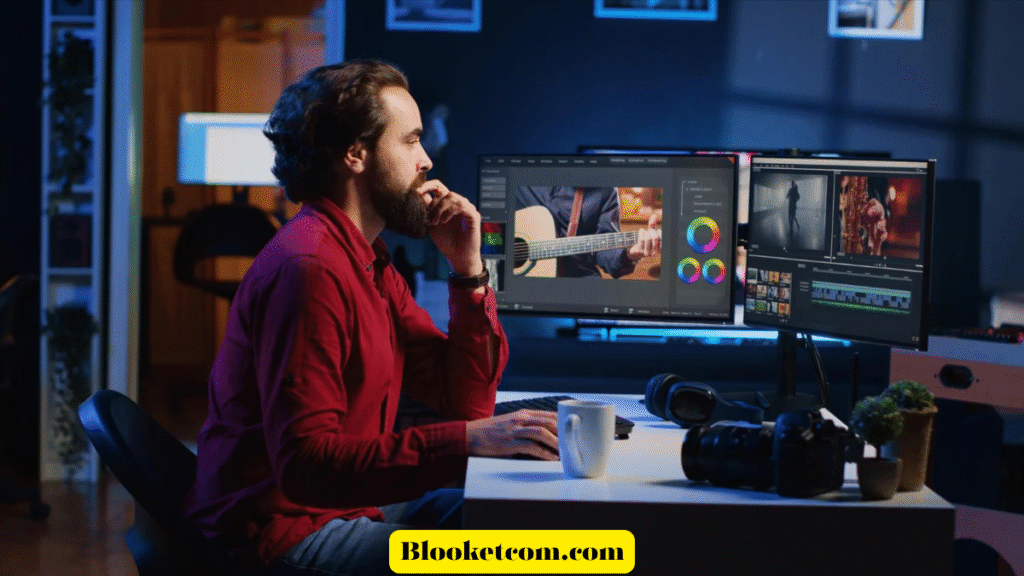Mastering SFM Compile: A Deep Dive into Source Filmmaker Compilation Techniques

Introduction to SFM Compile
When diving into the world of Source Filmmaker (SFM), one term that frequently comes up, especially among creators working on more polished or technically involved projects, is “SFM compile.” At its core, compiling in SFM refers to the process of rendering and finalizing your animation or scene for export. But unlike a simple render button in some video editors, SFM compile has layers of nuance, customization, and quirks that make it both powerful and intimidating.
SFM, developed by Valve, uses the Source game engine to allow users to create animated movies using assets from games like Team Fortress 2, Dota 2, and more. The beauty of SFM is its deep integration with the engine’s rendering system, which offers high-quality visuals—but to fully leverage that, one must master compiling.
In this guide, we’re going to break down what SFM compile means, the tools and methods you can use, troubleshooting common issues, and how to get the best visual quality out of your compiled scenes. We’ll keep it friendly and conversational, but make no mistake—by the end of this article, you’ll have expert-level insights into the SFM compile process.
1. What Does “SFM Compile” Actually Mean?

So, what does it mean to “sfm compile” in Source Filmmaker? If you’re new to SFM, you might assume it’s just another way of saying “render” or “export.” While that’s partly true, there’s more under the hood. Compiling in SFM involves taking your animation timeline, models, lighting, camera angles, and audio, and processing all of it into a finalized video file or sequence of image frames.
Unlike traditional video editors that might allow drag-and-drop rendering with presets, SFM gives users a significant degree of control. You can output uncompressed image sequences, select your preferred resolution and frame rate, manage motion blur and depth of field effects, and choose encoding options if you’re generating a final video.
Another key aspect is how SFM handles memory. Large scenes or complex effects can cause crashes or incomplete renders if the compilation isn’t optimized. Thus, compiling isn’t just a technicality—it’s a strategic part of creating a high-quality SFM video.
2. Tools and Settings for a Successful Compile
Let’s talk tools. Within SFM, the primary way to compile your scene is through the “Export” menu in the File bar. From there, you can choose between exporting an image sequence (which is preferred for high-end editing workflows) or a compressed video file directly.
Image sequences are a favorite among experienced creators because they allow for higher quality control. You can export in TGA, PNG, or even EXR formats depending on your needs. These sequences can later be imported into external editing software like Adobe Premiere Pro or DaVinci Resolve for post-production.
If you’re going for a direct video export, you’ll interact with formats like AVI. Here’s where SFM can get finicky: codec compatibility can cause headaches, especially on newer operating systems. Many users recommend rendering to a lossless image sequence first and then compiling that into a video using third-party tools. That way, you get the best of both worlds: SFM’s rendering power and your editor’s encoding finesse.
3. Advanced Compile Techniques and Tips
Want to take your compile game to the next level? Let’s go deeper. One powerful technique is using the “Poster” and “Image Sequence” tools in tandem. This lets you test specific frames for lighting or effects before committing to a full compile, which saves time and headaches.
Also, consider using launch options and console commands to tweak your compile environment. For instance, you can run SFM with launch options like -sfm_resolution to force specific output resolutions or -tools to enable the advanced interface. The console also lets you script exports or batch-render sequences, which is a game-changer for complex projects.
Another tip: understand the trade-offs of Anti-Aliasing (AA) settings. Higher AA values improve visual smoothness but exponentially increase compile times and RAM usage. Finding the sweet spot—often 4x or 8x MSAA—can be critical for both quality and stability.
4. Troubleshooting Common Compile Issues
SFM compile isn’t always smooth sailing. Many creators have horror stories of 5-hour renders crashing at 99% or strange artifacts appearing in what was supposed to be the final shot. Let’s troubleshoot some common issues.
First off, if your render fails midway, check your scene’s complexity. Too many particle effects, lights, or high-poly models can push your system over the edge. Breaking scenes into smaller chunks or lowering render quality temporarily can help you diagnose bottlenecks.
Another issue: black frames or missing models. This often happens when SFM can’t locate the materials or textures tied to your models. Double-check your file paths and make sure all assets are properly loaded and cached before starting a compile. Using the console command mat_reloadallmaterials can sometimes resolve texture issues.
Finally, consider your system’s resources. RAM and VRAM usage are critical when compiling. Close background applications, and if you’re compiling large projects regularly, it might be time to consider a hardware upgrade.
5. Optimizing Visual Quality During Compile
Let’s be real—we all want our final SFM videos to look jaw-droppingly good. To get that cinematic finish, you need to pay attention to visual optimization during compile.
Start with lighting. SFM supports advanced lighting features like volumetrics, shadows, and bloom. However, these can increase render times dramatically. Use light entities strategically and preview lighting in real-time before compiling.
Then, focus on motion blur and depth of field (DoF). These are two features that, when used correctly, give your scenes that filmic realism. The trick is moderation. Too much blur can look sloppy; too little makes the scene feel flat. Tweak your camera aperture and shutter speed settings within the Camera Shot controls.
Lastly, color grading. While SFM doesn’t have built-in color grading tools like Premiere or Resolve, you can fake it using lighting colors and post-processing in image editing software. Some creators also export additional render passes for better control in compositing software.
6. The Role of Third-Party Tools in SFM Compiling
Third-party tools can revolutionize your SFM workflow. While SFM itself is powerful, integrating external applications can make your compiling process smoother and more versatile.
VirtualDub is a popular choice for assembling image sequences into video files. It supports a wide range of codecs and gives users control over frame rates, compression, and audio sync. Another favorite is FFmpeg, a command-line tool that can batch-process sequences and encode to formats like MP4, WebM, or even animated GIFs.
Editing suites like After Effects or HitFilm are also handy for adding final polish. From VFX overlays to color correction, using these tools in combination with a clean image sequence export can elevate your final output significantly. The rule of thumb? Use SFM for animation and base visuals, and use external tools for final compilation and enhancements.
7. Batch Rendering and Automating Compiles
When you’re working on a series or a large project with many shots, compiling each one manually becomes a real time sink. That’s where batch rendering and scripting come in.
SFM supports a certain level of scripting via its console and the use of Python or batch files. You can set up commands to load specific sessions, define render parameters, and even export without opening the UI. This is especially useful if you want to leave multiple renders running overnight.
Batch rendering also helps standardize your output. If every scene in a series needs the same frame rate, resolution, and AA settings, scripting ensures consistency. It also minimizes human error, like forgetting to enable a crucial light source before exporting.
8. Best Practices for Large-Scale Projects
If you’re working on a big SFM film or series, best practices become essential. One of the first things you should do is maintain a solid folder structure. Group assets by scene, keep a log of which models and sounds you use, and archive older versions to prevent data loss.
Another pro tip: use proxy models. These are low-poly versions of characters or props that can make scene editing faster. Replace them with high-poly versions before final compile. This saves system resources and speeds up your workflow.
Also, always preview your compiled scenes before finalizing them. Watch out for dropped frames, audio sync issues, or lighting bugs. It might feel tedious, but catching problems early can save hours of rework later.
9. SFM Compile for 4K and High-Fidelity Projects
Compiling for 4K? Get ready to stretch your hardware. Rendering at 3840×2160 pixels requires not just more memory, but more patience. You’ll need to optimize every element of your scene—from shadows to textures—to keep performance manageable.
Using high-resolution textures is a must, but so is efficient asset usage. Don’t overload your scene with unnecessary detail that won’t even be visible in the final cut. And be sure your Anti-Aliasing and DoF settings are adjusted for 4K; what looks good at 1080p might not translate well to ultra-high resolutions.
Finally, export to image sequences. Direct video encoding at 4K within SFM is risky and often leads to corruption or failure. Compile your frames first, then stitch them together in a video editor that handles 4K efficiently.
10. The Future of SFM and Compiling Innovations
While Source Filmmaker is over a decade old, its community remains vibrant. New tools, mods, and scripts continue to push its boundaries. In the future, we may see integration with newer engines or updates that streamline compiling further.
There are already community-made forks and enhancements, like SFM Black Mesa Edition or SFM Reborn, which improve compile reliability and add modern features. Keep an eye on forums like Steam Workshop and Discord groups to stay updated.
And who knows? As Valve continues to support creative tools, we might one day see a full revamp of SFM—perhaps even with real-time compiling or GPU-accelerated rendering. Until then, mastering the current compile system is your ticket to stunning animations.
FAQ Section
1. Why does my SFM compile crash near the end? This often happens due to system memory overload. Try reducing scene complexity or exporting in smaller parts.
2. What’s the best format for exporting from SFM? Image sequences (PNG or TGA) are best for quality. Use external tools to convert them into video.
3. Can I compile SFM animations in 4K? Yes, but it’s demanding. Use image sequences, optimize assets, and expect longer render times.
4. How can I speed up my SFM compile? Simplify scenes, reduce effects, and close background applications. Use proxies during editing.
5. Is there a way to automate multiple SFM compiles? Yes, using scripting and console commands. Batch rendering is efficient for large projects.





